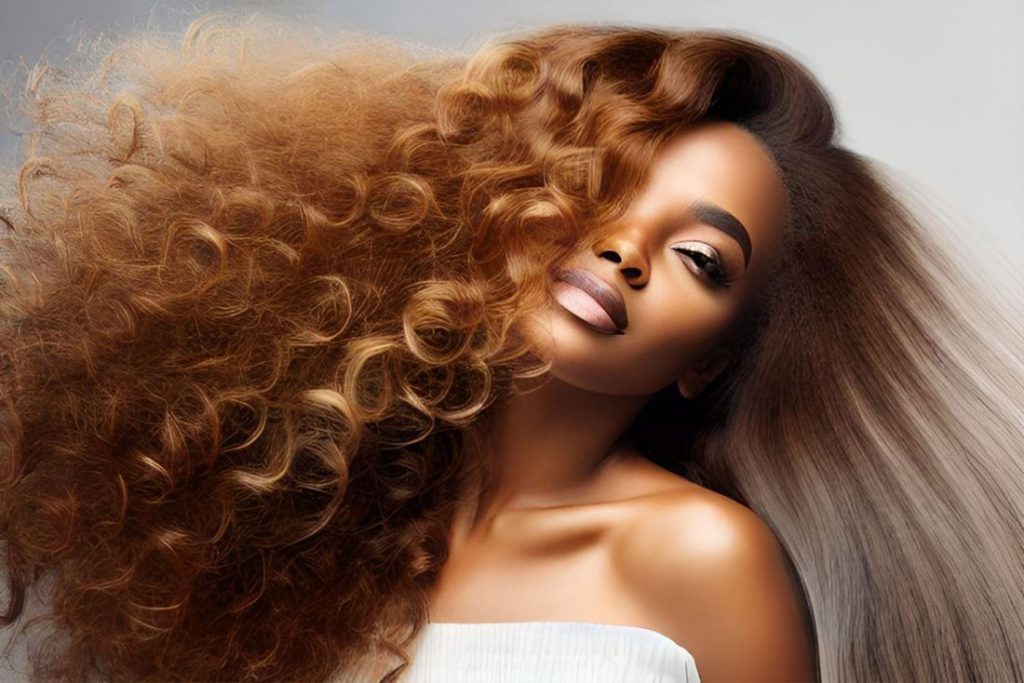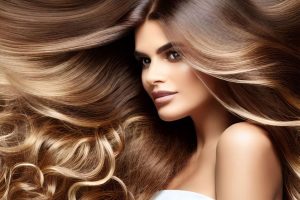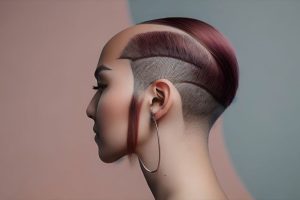Decoding Hair: Types, Textures, and the Art of Cosmetology
Understanding a client’s hair type and texture is fundamental in the world of cosmetology. With hair being as unique as fingerprints, delving into the complexities of different hair types and textures is paramount for ensuring a flawless style and healthy care. This comprehensive guide serves as a deep dive into these intricacies, offering professionals tools for perfection in their craft.

1. The Spectrum of Directional Patterns
Hair has distinct patterns that naturally manifest, majorly falling into four categories:
- Straight: Hair fibers run linearly from root to tip.
- Wavy: Hair contains subtle curves and can range from slight waves to more pronounced undulations.
- Curly: Spiraled hair that can take various forms, from loose, open loops to tighter ringlets.
- Coily: These are the tightest forms of curls, akin to springs or very tight spirals.



2. The Ten Universal Curl Patterns
The vast range of curl patterns can be categorized into approximately ten universal types, spanning from wavy to curly and ending in coily. It is imperative for cosmetologists to distinguish between these patterns to offer personalized and effective care.
3. Beyond a One-Size-Fits-All Approach
Contrary to popular belief, the natural hair care industry isn’t monolithic. It’s not unusual for clients to showcase more than one curl pattern. Hair texture varies widely even on a single head, demanding tailored attention. For stylists, the goal revolves around accentuating the texture’s unique characteristics while preserving its integrity.
4. The André Walker Hair Typing System
André Walker pioneered the consumer-friendly hair classification with his Hair Typing System. This model organizes hair textures via a combination of numbers and letters, focused on the principal hair patterns: straight, wavy, curly, and coily. Additionally, factors like density, porosity, and elasticity are addressed. With this system gaining traction in pop culture, professionals should be adept in it to ensure effective consultations.

Modern times have seen variations to the Walker system, with newer classification systems emerging to include additional textures and curl patterns.
5. Delving into Hair Texture and Density
Texture:
- Fine: Hair strands that are thinner and often more fragile.
- Medium: A balance between fine and coarse textures.
- Coarse: Thicker hair strands, often robust and more resistant to damage.
-
Density: This pertains to the amount of hair present on the scalp. It can vary from very thin, where the scalp is easily visible, to very thick, where the hair is densely packed.
6. The Relationship: Texture, Density, and Style Selection
There exists a pivotal relationship between hair texture and density in terms of style determination. For instance, a person with thin yet coarse hair might require different styling and care compared to someone with thick, fine hair. These intricate differences dictate the product selection, cutting techniques, and styling modalities.
7. The Essential Consultation Table
A detailed table showcasing curl patterns and textures would ideally assist professionals during consultations. While the present guide does not enumerate straight hair, such tables should encompass the complete hair spectrum for comprehensive analysis.
Universal Curl Patterns and Hair Types | ||||
WAVY | ||||
Hair Pattern | Type 1: | Type 2: | Type 3: | |
Wave Formation | Soft large (S) formation | Soft medium (S) formation | Soft small (S) formation | |
Diameter (Texture) | Fine to coarse | Medium to coarse | Medium to coarse | |
Density | Average | Slightly above average | Above average | |
Volume | Limited | Medium | High | |
Frizz | Little to none | Moderate to frizzy | Moderate to excessive with some tangling | |
Porosity | Low to average | Low to average | Average to high | |
Elasticity | Moderate, with easy movement | Good, with gentle movement | Great, with great movement | |
Reaction to Light | Reflects light, | Reflects light, shines | Reflects light, shines | |
CURLY | ||||
Hair Pattern | Type 4: | Type 5: | Type 6: | |
Curl Formation | Very large to medium ringlets, spirals, or loops (C) formation | Medium ringlets, spirals, or corkscrews (C) formation | Small ringlets, spirals, and tight corkscrews (C) formation | |
Diameter (Texture) | Fine to coarse | Fine to coarse | Fine to coarse | |
Density | Average | Above average | Above average | |
Volume | Moderate | High | High, with some shrinkage | |
Frizz | Moderate | Moderate to excessive with tangles | Excessive with tangles and knots at ends | |
Porosity | Low to average | Average to high | Average to high | |
Elasticity | Good, with good movement | High, with great movement | Very high, with great movement | |
Reaction to Light | Reflects light, shines | Reflects a little light and a little shine | Reflects light when wet, needs natural oils for shine | |
COILY | ||||
Hair Pattern | Type 7: | Type 8: | Type 9: | Typ e 10: |
Coil Formation | Medium to small spiral-shaped curls, small ringlets | Small spiralshaped curls, very small ringlets or corkscrews | Very small tight curls or coils, and tight zigzag patterns | Medium to very loose zigzag patterns; can be straight |
Loose curl formation | Tight curl formation | Very tight curl formation | Zigzag formation | |
Diameter (Texture) | Fine to coarse | Fine to coarse | Fine to coarse | Fine to coarse; feels coarse or rough to the touch |
Density | High | Varies | Very high | Varies |
Volume | Medium to high, with some shrinkage | Varies, with lots of shrinkage | Varies, lots of shrinkage | Varies, little shrinkage, can be straight |
Frizz | High, tangles at ends | High, tangles and knots at ends | High, tangles and knots at ends and hair shaft | Very high; hair shaft can knot |
Porosity | Average to high | Average to high | Low to high | Low |
Elasticity | Good to moderate; fragile with some movement | Good to moderate; fragile, breaks easily with little movement | Moderate to poor; very fragile, tangles and breaks easily with no movement | Good to moderate but can tend to be poor; extremely fragile, tangles easily with some movement |
Reaction to Light | Reflects light when wet | No light reflection | No light reflection | No light reflection |
Styling Options for Hair Patterns and Textures | |
Hair Pattern аnd Texture | Qualities |
Straight Fine | • Hugs the head shape, lacks body or volume, has marginal elasticity |
Straight Medium | • Offers more styling versatility |
Straight Coarse | • Hard to curl, carries more volume |
Wavy Fine | • Can appear fuller when diffused with heat and appropriately cut and styled |
Wavy Medium | • Offers the most styling versatility |
Wavy Coarse | • Silhouette can be very voluminous if not shaped properly |
Curly Fine | • When worn long, often separates, revealing the client’s scalp unless the hair is very dense |
Curly Medium | • Silhouette with volume |
Curly Coarse | • Mix of coiled to extremely coiled hair strands |
Very Curly Fine | • Generally best cut short |
Very Curly Medium | • Silhouette can promote horizontal volume lines, as it tends to widen as it grows longer |
Coily / Afro-texture | • Silhouette will be wide |
Conclusion
Hair, in all its glory, represents a myriad of types and textures. As cosmetologists, appreciating this diversity is the foundation for exceptional hair care. By understanding and implementing knowledge on hair types, patterns, textures, and density, professionals can craft masterpieces that don’t just sit on a client’s head but resonate with their unique identity.









